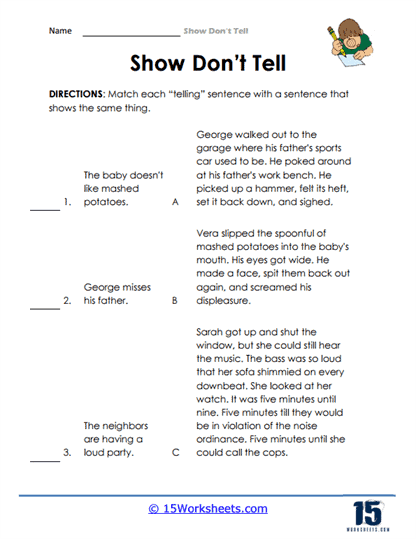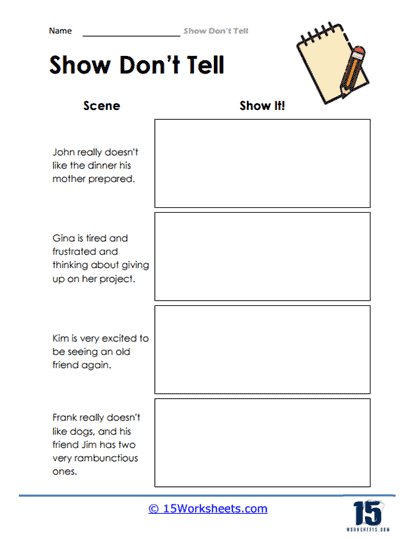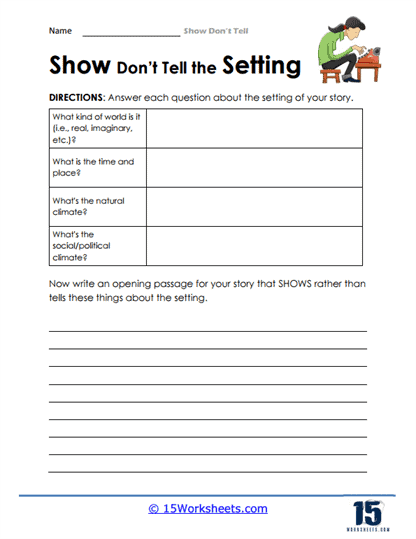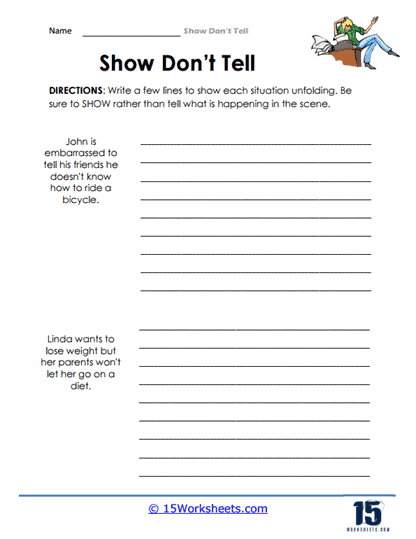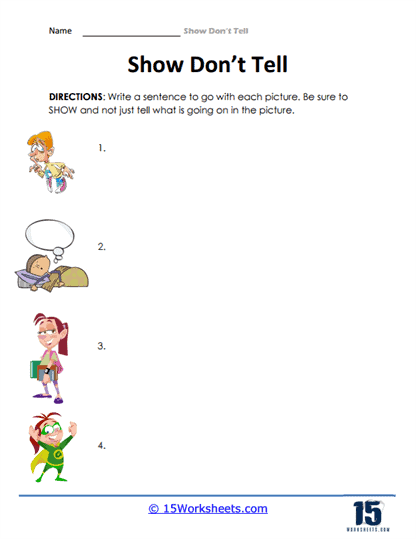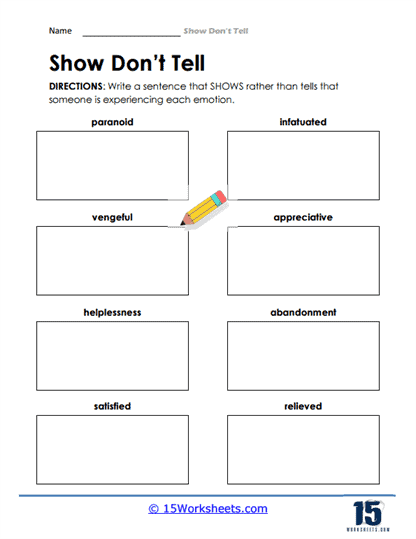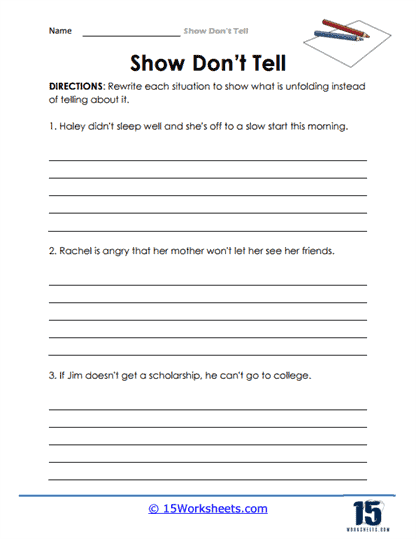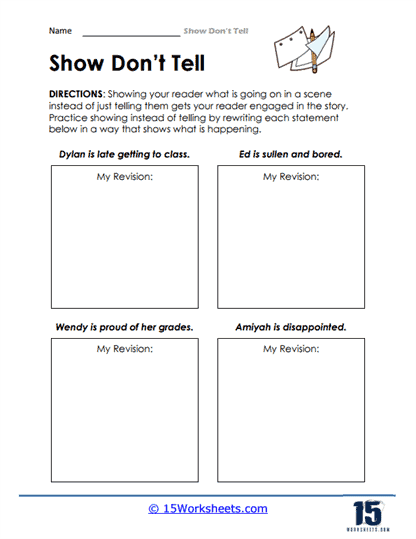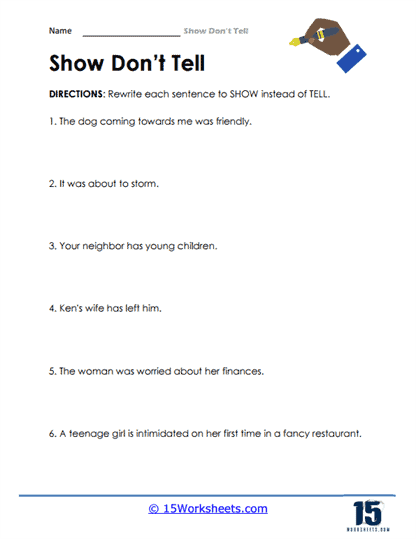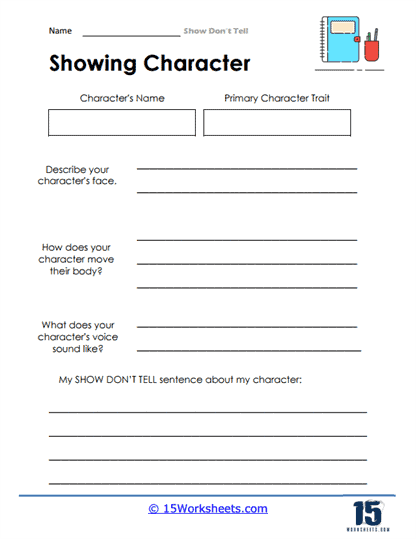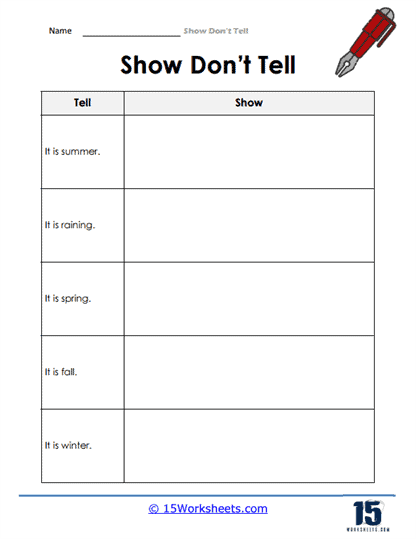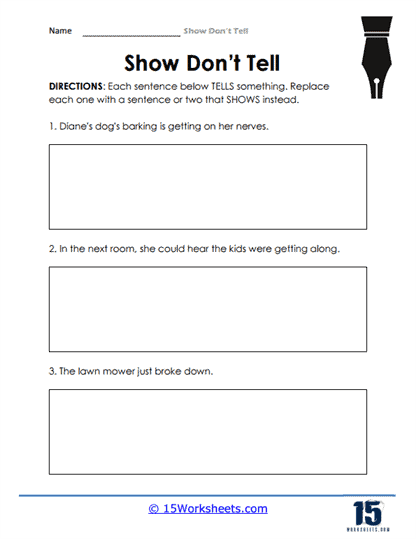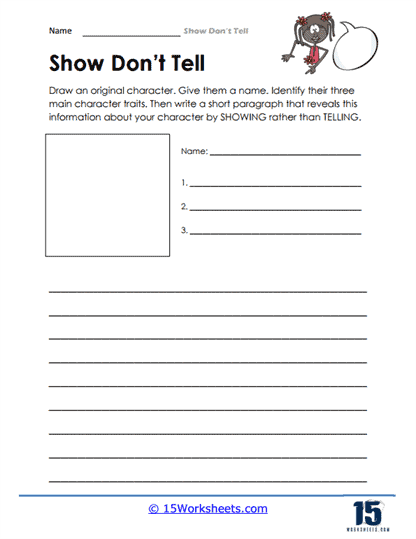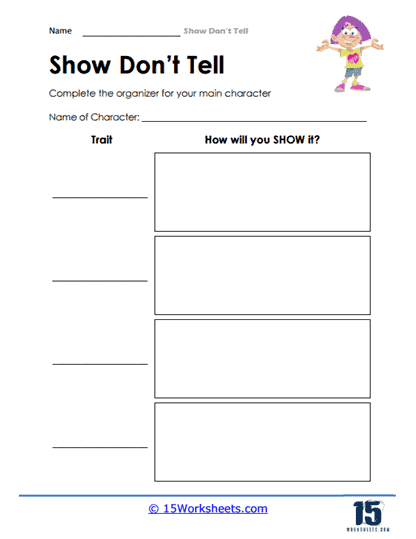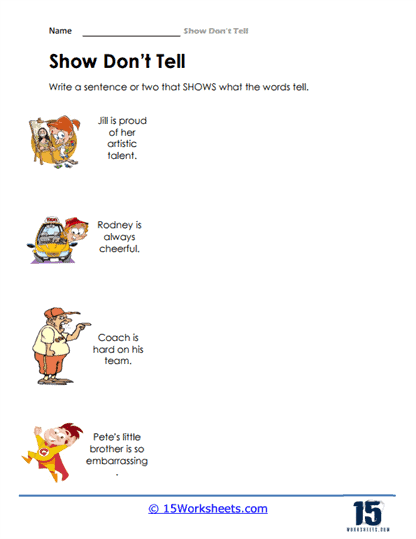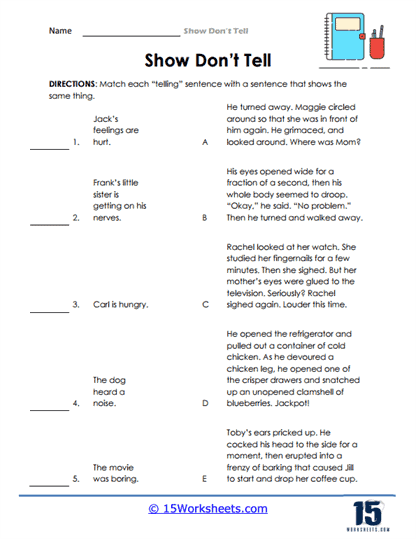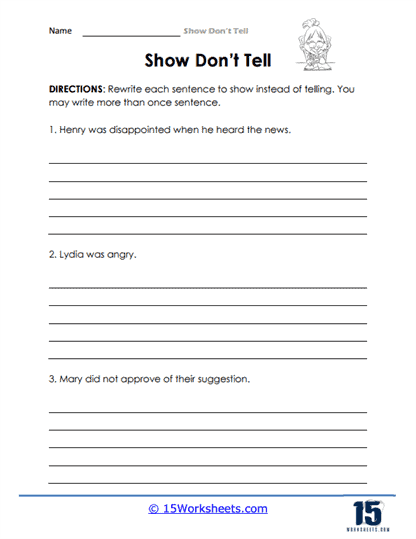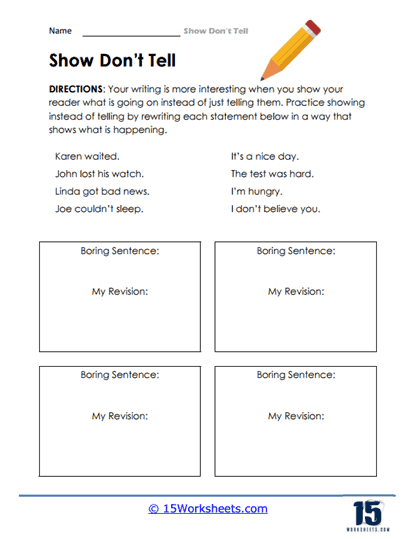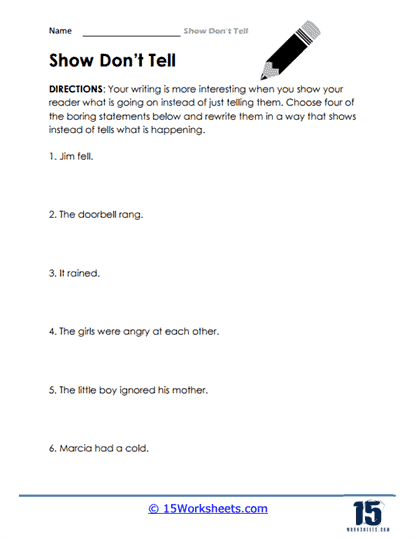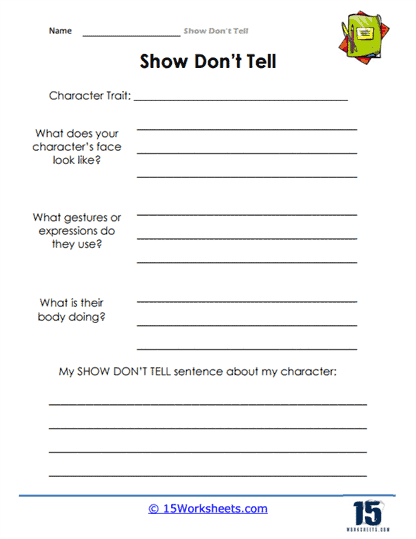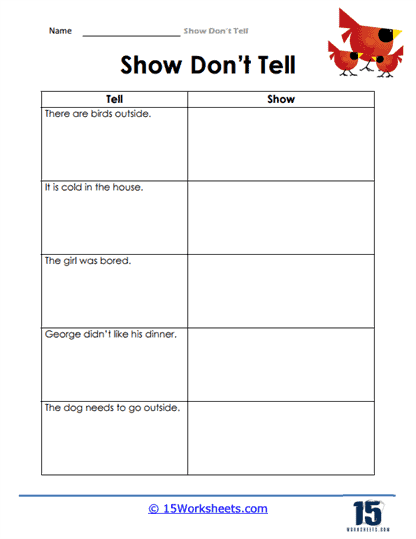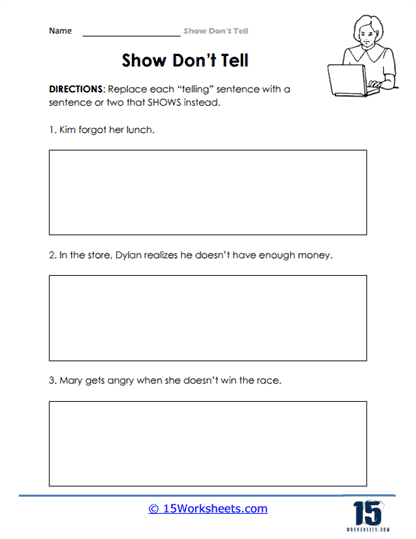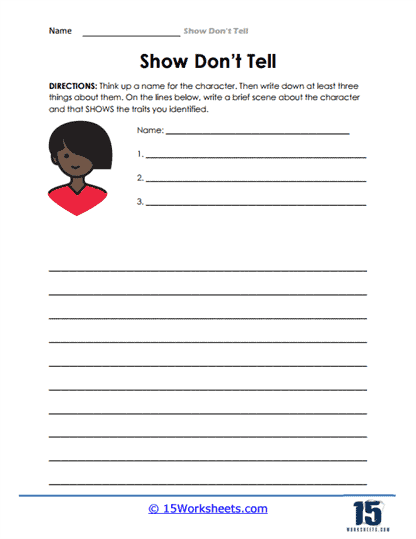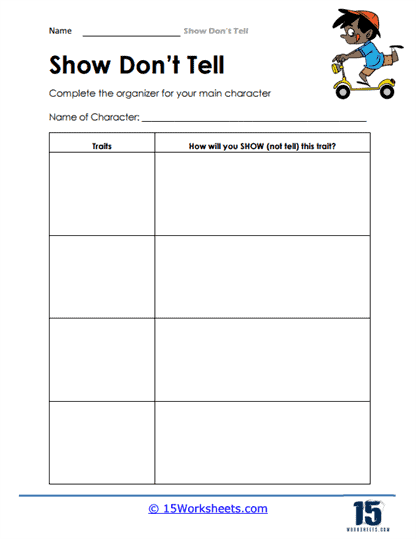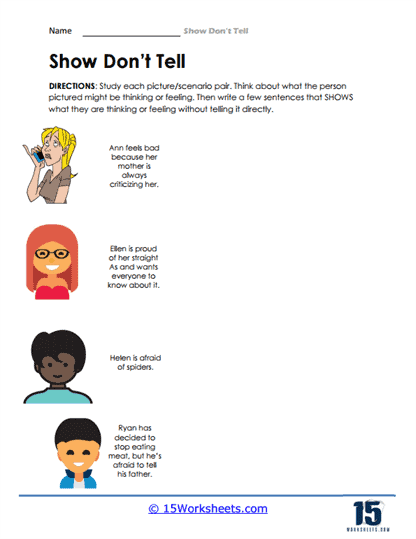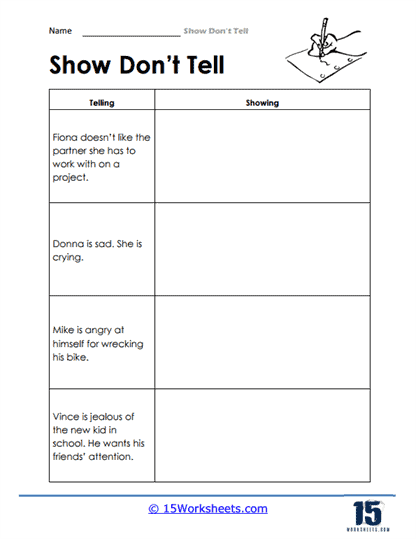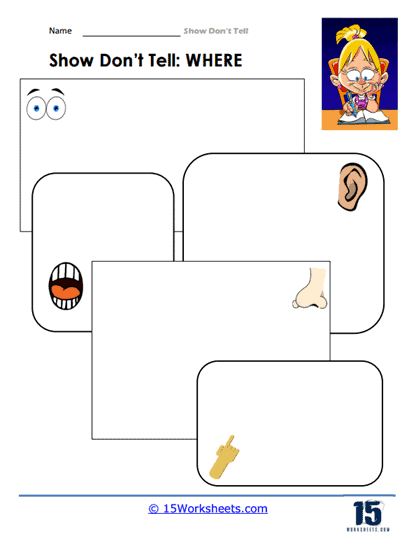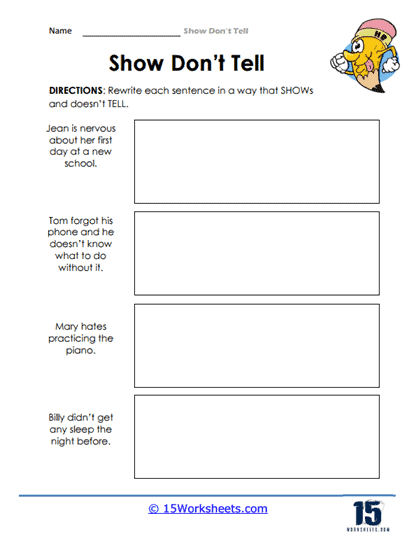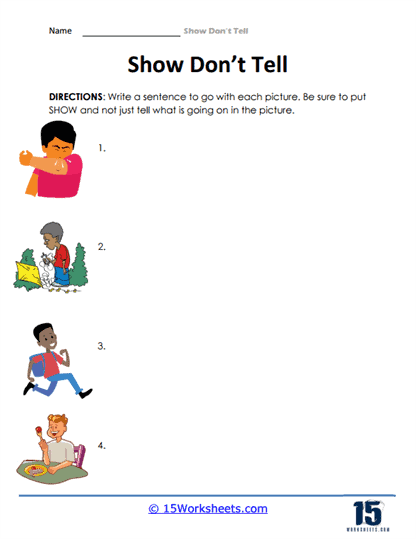Show Don't Tell Worksheets
All About These 15 Worksheets
This series of 15 worksheets is a captivating resource designed to help students master the art of descriptive writing by engaging readers through vivid sensory details, actions, and the expression of character emotions. These worksheets encourage students to move beyond simply telling the reader what is happening and instead immerse them in the story by allowing them to experience the events through their senses and emotions.
The exercises and writing prompts focus on developing students’ ability to create dynamic and immersive narratives that captivate readers and evoke a strong emotional response. With a variety of stimulating exercises, students learn to use descriptive language effectively, convey mood and atmosphere, and bring their stories to life through sensory experiences. Through these worksheets, students will:
- Use descriptive language that appeals to readers’ senses, making them feel as if they are a part of the story;
- Choose strong verbs that convey a sense of movement and energy, creating a more engaging and vivid narrative;
- Learn to convey emotions indirectly, allowing readers to empathize and connect with the characters on a deeper level.
- And practice describing the environment, the atmosphere, and the mood, using sensory details and evocative language to transport readers into the story.
This series is suitable for students across different grade levels and can be integrated into language arts classes, creative writing workshops, or individual writing practice. By using these worksheets, teachers provide their students with the tools to craft engaging narratives that immerse readers and evoke powerful emotions.
Through these exercises and writing prompts, students develop skills in descriptive writing, sensory imagery, character development, and emotional expression. In summary, they empower students to create stories that come alive on the page, allowing readers to experience the events and emotions in a deeply immersive and engaging manner. This Show Don’t Tell worksheets series cultivates the ability to captivate readers through vivid descriptions, making writing a truly transformative and compelling experience.
What Is the Writing Technique of Show Don’t Tell?
The “show, don’t tell” writing style is a simple method often used by new writers working on their first novel or seasoned professionals trying to release their next bestseller. Out of the several writing styles writers adopt to create their stories, this method has gained the most recognition.
With the “show, don’t tell” writing style, a reader can experience descriptive details of the story through sensory details, actions, or the expression of a character’s emotions instead of the author describing the event. This writing style aims to take the reader inside the story, which gives them a truly immersive experience of the character’s actions and emotions.
In simple words, the author will attempt to show you what is happening in their story through actions and images, rather than simply relying on narration.
Some Examples of Show, Don’t Tell
Fiction and non-fiction writers share a common goal: telling the story in the simplest way possible. According to a writing rule, showing will help you create scenes in your mind that help you develop characters more vividly. Here’s an example:
- Tell: Lily was scared when she saw the thief.
- Show: Lily’s heart started racing as a masked man caught the corner of her eye.
Even though these sentences contain basic information, the show variant puts the reader into the character’s mindset who is experiencing the scene. The sentence describes their emotional and physical state, which tells the reader how a character feels. This is more impactful than simply telling the reader that the main character is scared because they’ve seen a thief.
Tips for Adopting the Show, Don’t Tell Writing Method
Whether you’re writing a screenplay, novel, short story, or sonnet, you must understand the small details involved in this writing style. Whether it’s character building, worldbuilding, or narrative progression, there are a few details you’ll have to pay attention to nail this writing method.
Here are a few tips that will help you show and not tell when you write:
- Using dialogue is a neutral way of communicating the narrative details of a story without relying on a boring description. The dialogue you put in your story will also teach your readers about the characters through their tone, vocabulary, and perspective. For instance, if a particular character prefers speaking in long-winded sentences, the reader may think they’re well-educated.
- A strong verb is descriptive and specific. It serves the dual purpose of making your writing style a lot more immersive while keeping your sentences concise at the same time. A weak verb will hinder your ability to create an evocative story in the reader’s mind.
- By packing a scene through sensory details, you will help your readers imagine the perfect setting for a scene, but you’ll also give them a distinct world that they can interact with. Rather than simply telling them that a character is in Paris, show them the lighting of the Eiffel Tower. Since you’re creating the whole scene, you control every element.

